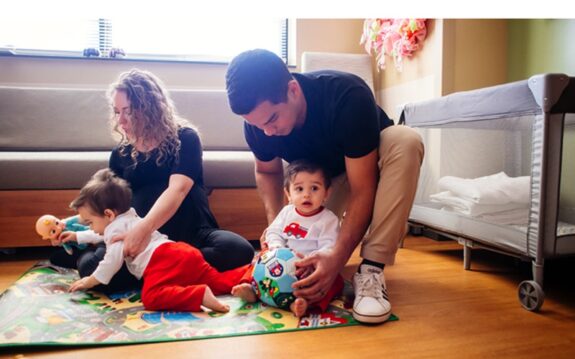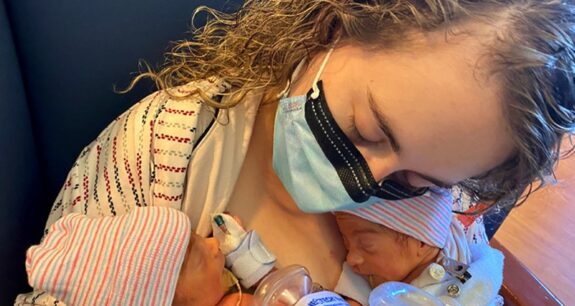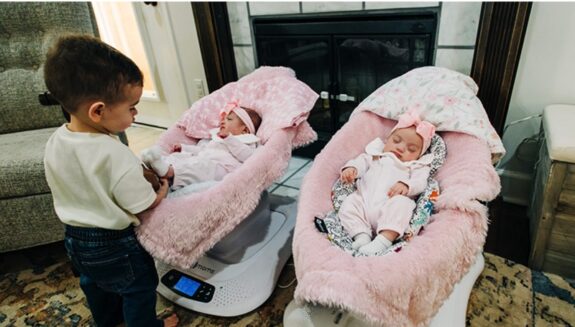Britney and Frankie Alba found themselves in an extraordinary situation when it was revealed they were expecting again.
Last year the couple welcomed identical twins Luka and Levi. Just six months later Britney found out they were expecting a second set of identical twins identified as monoamniotic-monochorionic that shared the same placenta, amniotic sac, and fluid. MoMo twins are some of the rarest types of twins, making up less than 1 percent of all births in the United States.
“While extremely rare, MoMo twin pregnancies have a high risk of fetal complications,” said Rachel Sinkey, M.D., assistant professor in the UAB Marnix E. Heersink School of Medicine Department of Obstetrics and Gynecology. “They share everything except umbilical cords, which can easily become entangled in a single sac. Unfortunately, there is a high rate of stillbirths associated with MoMo twins.”
Alba was referred to the University of Alabama at Birmingham(UAB), where physicians in the Division of Maternal-Fetal Medicine specialize in the diagnosis and management of high-risk pregnancies. To increase Alba’s and the twins’ chances of survival and minimize complication risks, the UAB team advised that Alba be admitted into the UAB High-Risk Obstetrics Unit between 24 and 28 weeks to receive 24/7 care.
“It was nerve-wracking to think about the journey ahead of me and being away from my boys for several weeks,” Alba said. “But I knew I had a village at home and would be in great hands at UAB, which calmed my worries.”
Britney Alba was admitted at 25 weeks and spent over 50 days in the HRO unit where she was monitored by the multidisciplinary team of maternal-fetal specialists, high-risk obstetrics nurses, and neonatologists.
“UAB is an academic research medical facility, and as a teacher, I wholeheartedly understand the importance of learning,” Alba said. “Having had to take a step away from teaching during my pregnancy, it was nice still being part of the educational process.”
The team aimed to get the twins to 32-34 weeks, then deliver via cesarean section. Sinkey says the gestational age is the national standard for delivering MoMo twins due to survival chances for preterm birth being high and the increased risk of fetal death or stillbirth due to cord entanglement the longer the delivery is delayed.
On Oct. 25, 2022, Lydia and Lynlee Alba were delivered at 32 weeks’ gestation and admitted to the UAB Regional Newborn Care Unit for continuing care. They stayed in the NICU for a month as they continued to develop and were discharged just in time for the holiday season on Dec. 7 — two weeks before their original due date.
“MoMo twins are rare, and sometimes both twins do not make it,” Sinkey said. “I think the team-based care approach at UAB between maternal-fetal specialists, genetic counselors, nurses and NICU team greatly helped the outcome. From beginning to end, Britney and the girls have defied all odds.”









